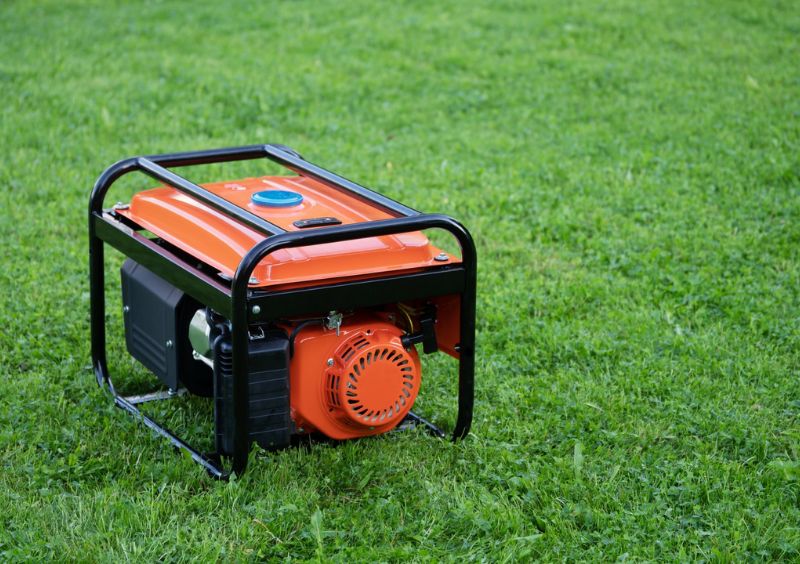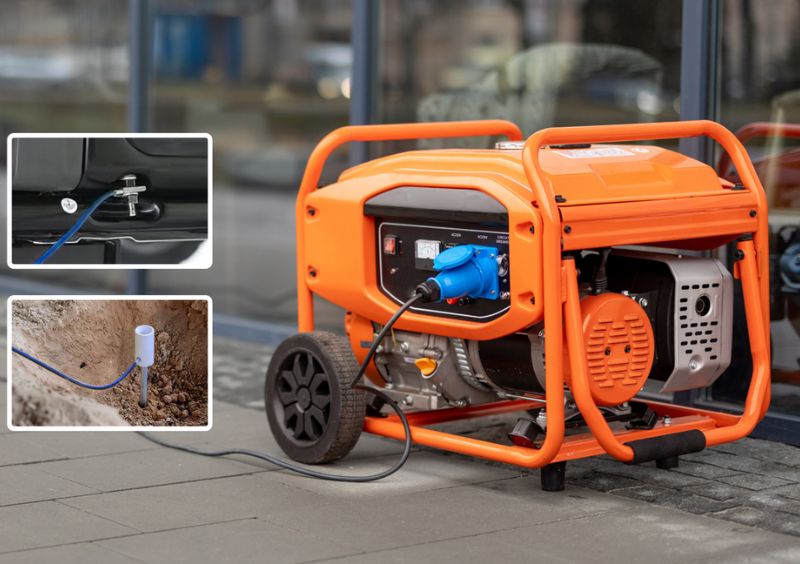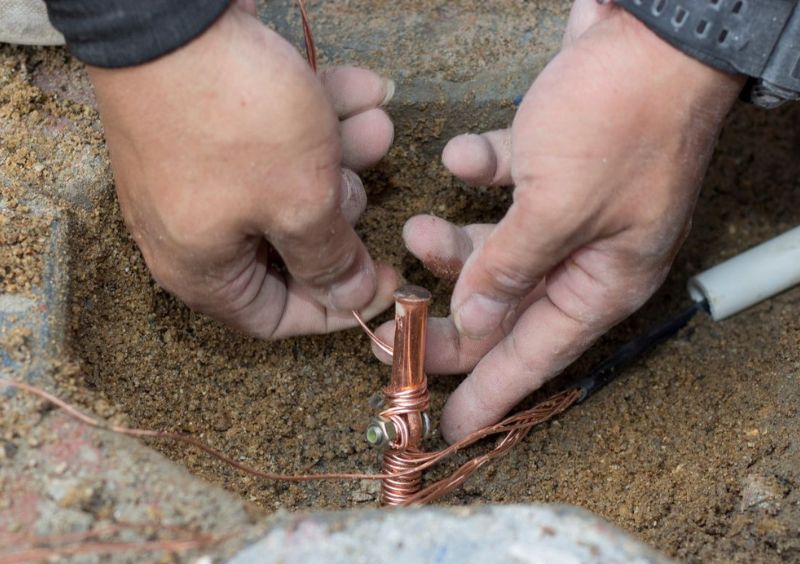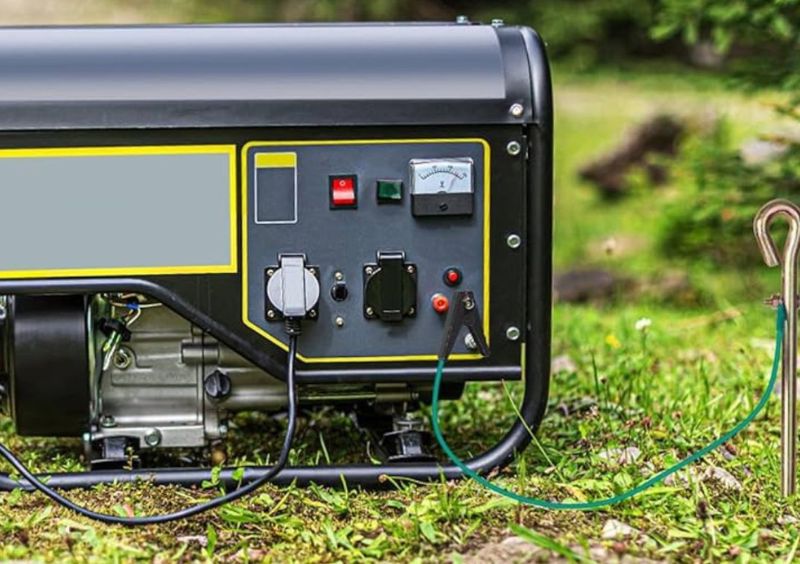Ground a portable generator correctly to prevent electric shocks, protect equipment, and ensure reliable performance. Many people overlook this crucial safety step, increasing the risk of electrical hazards and system failures.
This guide explains why grounding is essential and provides clear steps to keep your generator running safely and efficiently. Proper grounding isn’t just a precaution—it’s a key practice for anyone using a portable generator.
Understanding Grounding
Grounding a portable generator has become important for safety and proper functioning. This paper considers what grounding means, the principles of basic electrical theory, and its importance.
Definition of Grounding – The Universal Term
Grounding is the process of connecting an electrical system, like a portable generator, to the earth using a low-resistance conductor such as a copper wire or rod. This creates a safe path for stray electricity, preventing electric shocks, fires, and equipment damage.
When you ground a portable generator, you ensure that excess current is safely directed into the ground rather than posing risks to users or devices. Following OSHA and NEC guidelines, proper grounding enhances safety and efficiency, making it essential whether you’re using a generator at home, on a job site, or while camping.

Basic Electrical Concepts
Ground a portable generator to control the flow of electricity, ensuring safe operation and system stability. Electricity moves through a circuit, driven by voltage (the force pushing electrons) and carried by current (the movement of electrons). Ideally, electricity remains within its circuit, powering devices efficiently. However, faults—such as damaged cords or insulation failures—can cause electricity to stray, creating potential hazards.
Grounding is essential for electrical safety, providing a controlled, low-resistance path for stray electricity to dissipate into the earth. This process stabilizes voltage levels and prevents dangerous surges from reaching people or equipment. Essentially, when you ground a portable generator, you ensure that any unintended electrical flow is safely redirected, minimizing risks and maintaining the integrity of the system.
Why Grounding a Portable Generator is Needed?
Grounding is necessary for the generator to prevent shock hazards and ensure high reliability. It also eliminates voltage spikes and prevents other disturbances in the power supply. Safety regulations generally require the grounding of generators to protect users and sensitive electronic equipment from erratic electrical currents.
Grounding a portable generator assures you of the best safety standards; the power supply is effective and safe. You will be able to lengthen the life of your generator and protect all devices and users with it. Safety and efficiency are key to important operations and critical times during power supply.
Safety Benefits of Grounding a Portable Generator
Grounding a portable generator is one of the most effective activities possible to conduct to ensure the protection of equipment and users. This paper describes the critical safety benefits of grounding a portable generator, which doesn’t allow for easy adherence to safety rules but also enhances operational reliability and diminishes hazardous incidents.
- Importance of Grounding: Grounding provides a safe path for excess electricity to dissipate, reducing the chances of overloading the system. It ensures that your generator operates within safe electrical parameters, preventing hazardous incidents and maintaining performance reliability.
- Shock Prevention: Electrical faults can turn a generator into a live hazard. Grounding a portable generator diverts stray electricity into the earth, ensuring it doesn’t pass through you. For instance, if a frayed cord exposes live wires, grounding stops the risk of electric shocks. This is especially crucial in wet environments, where the risk of electrocution is higher.
- Equipment Protection: An ungrounded generator is vulnerable to voltage spikes and electrical surges, which can damage appliances like refrigerators, chargers, and other sensitive electronics. Grounding a portable generator stabilizes the voltage, preventing sudden power fluctuations from frying your devices.
- Protection of Human Life: Proper grounding ensures that electricity flows through designated paths instead of posing a danger to users. This is especially critical in damp conditions or for users who lack electrical safety expertise. Grounding a portable generator eliminates accidental shocks that could cause severe injuries or fatalities.
Grounding is more than a technical requirement; it is critical for every person running a portable generator. This will mean that your operations not only adhere to the safety standards stipulated but will also be excellently positioned for perfect performance. The grounding of a portable generator ensures that the equipment is perfectly protected, lives are safeguarded, and peace of mind is assured while in use. By learning and adopting the correct grounding practices, users can up the level of safety and reliability with their portable generators. This simple method further cements the commitment to safety and efficiency and essentially forms the core of responsible generator use.
Do All Generators Need to Be Grounded?
Ground a portable generator—or not? The answer isn’t always straightforward. It depends on how you’re using it and the type of generator. Let’s explore the risks of skipping it and when it’s a must.
Risks Involved if Not Grounded
Ground a portable generator to avoid serious trouble. Without grounding, a fault—like a loose wire—can send electricity where it doesn’t belong. You risk electric shocks if the generator’s frame becomes live; touching it could be deadly, especially in wet conditions.
Equipment damage is another issue—ungrounded surges might fry your appliances, from chargers to fridges. Worse, fires or explosions could spark if stray current ignites fuel or nearby flammables. OSHA warns that ungrounded setups amplify these dangers, making grounding a critical safety step.

When Grounding Is Required
Ground a portable generator in specific cases—it’s not always mandatory. Portable generators don’t need grounding if they only power cord-and-plug equipment directly through frame-bonded receptacles.
Here, the frame acts as the ground. But if it’s tied to a structure (like a house) via a transfer switch, NEC Article 250 demands a grounding electrode—like a rod. Stationary generators, built into a fixed system, always require grounding to the main panel or earth.
Tools Needed for Grounding a Portable Generator
Ground a portable generator with the right tools and know-how. Here’s your complete guide to get it done safely and effectively.
List of Tools

To ground a portable generator, you’ll need:
- Grounding rod: A copper or copper-clad steel rod (at least 8 feet long).
- Copper grounding wire: A 6-gauge or thicker wire to connect the generator to the rod.
- Wire strippers: For preparing wire ends.
- Wrench or screwdriver: To secure the wire to the generator’s grounding terminal.
- Hammer or mallet: To drive the grounding rod into the ground.
- Clamp: To attach the wire firmly to the rod.
Choosing Quality Tools
Choosing the right tools for grounding a portable generator is essential for safety and effectiveness. It’s important to select high-quality tools and materials that are durable and maintain their effectiveness even in harsh outdoor environments.
Always ensure that local codes approve the grounding wire and rod you use to maintain proper safety standards. This adherence secures your setup and ensures compliance with regulatory requirements, providing peace of mind and safeguarding against potential hazards.
Tool Safety Tips
Safety is the top priority when handling electrical equipment. Always take precautions to protect yourself and your generator:
- Wear gloves and protective eyewear to prevent injuries.
- Inspect your tools before use—damaged tools can lead to accidents.
- Work in dry conditions to reduce the risk of electrical hazards.
Proper handling and maintenance of your tools not only safeguards your well-being but also ensures the long-term reliability of your generator.
Step-by-Step to Grounding a Portable Generator Instructions
Proper grounding ensures personal safety when using a portable generator and is necessary for meeting all electrical standards. Instantly see clear, professional instructions to quickly and efficiently establish a ground connection for your generator.

1. Install The Ground Rod
Ground a portable generator by first installing a proper grounding rod. Choose a location at least 6-8 feet away from the generator, ensuring it’s clear of underground utilities.
- Use a copper or copper-clad steel rod at least 8 feet long for effective grounding.
- Hold the rod vertically and drive it into the ground using a hammer or mallet. If the soil is too hard, install the rod at a slight angle (no more than 45 degrees).
- Leave about 6 inches of the rod exposed above ground for easy access to the grounding wire connection.
A properly installed ground rod is the foundation of a safe and efficient grounding system.

2. Strip & Wrap The Copper Wire
Ground a portable generator by properly connecting the copper grounding wire to the rod.
- Use wire strippers to remove 6-12 inches of insulation from one end of the copper wire. Be careful not to damage the strands inside.
- Wrap the stripped wire tightly around the exposed top of the grounding rod.
- Secure the connection using a grounding clamp, tightening it with a wrench until snug but not overly compressed.
A clean, tight wrap ensures a strong connection that directs electrical faults safely into the earth.
3. Attach The Copper Wire To Your Generator
Now, connect the other end of the grounding wire to the generator’s grounding terminal.
- Locate the grounding terminal—it’s usually a bolt or lug marked with a grounding symbol (check the generator manual if unsure).
- Strip about 1 inch of insulation from the other end of the copper wire.
- Loop the stripped wire around the grounding terminal and tighten it using a wrench or screwdriver.
- Ensure the connection is firm by giving it a gentle tug—it should not budge.
4. Test The Integrity Of Your Connections
Once you ground a portable generator, it’s crucial to test the setup to ensure safety.
- Visual Check: Inspect the grounding rod, clamp, and terminal to confirm all connections are tight and secure.
- Wiggle Test: Lightly tug the grounding wire at both ends to ensure it doesn’t loosen.
- Multimeter Test (Optional): If you have a multimeter, set it to continuity mode, place one probe on the grounding rod and the other on the generator’s frame—if it beeps, your connection is solid.
- Operational Test: Plug in a small electrical device, start the generator, and monitor for any irregularities like flickering or unusual noises.
Special Considerations for Mobile Use
Grounding a portable generator is a critical safety practice for mobile detailing, ensuring both operator protection and equipment reliability. Since detailing often takes place in different locations, proper grounding methods must be adaptable to various environments. Below are key factors to consider when grounding your generator for mobile detailing.
Generator Size and Power Requirements
Choosing the right generator is the first step in ensuring a safe and efficient setup. A properly sized generator should match your power needs without unnecessary extra features that could complicate grounding.
Overloading a generator can lead to electrical instability, while an oversized generator may create grounding challenges. Selecting the right balance improves efficiency, safety, and ease of grounding a portable generator.

Portable Grounding Vs. Fixed Grounding
In mobile detailing, portable grounding solutions are essential for flexibility. Since you may be servicing vehicles in parking lots, driveways, or remote locations, a temporary grounding system must be easy to set up and remove.
- Portable grounding rods allow you to establish a reliable connection in any location.
- Heavy-duty grounding cables provide a strong, low-resistance link between the generator and the grounding rod.
- Clamps and adjustable grounding solutions ensure a secure setup, even in temporary workspaces.
Grounding in Different Locations
Grounding a portable generator can vary depending on the terrain. The type of ground surface you’re working on will determine the best grounding method:
- Soft Earth: Ideal for grounding, as it allows the grounding rod to be fully inserted, providing a strong connection.
- Rocky or Hard Terrain: May require angling the rod (not exceeding 45 degrees) or using alternative grounding methods such as conductive grounding plates.
- Pavement or Concrete: A grounding rod may not be feasible. In these cases, using a water pipe grounding system or an engineered grounding solution may be necessary.
Always assess the site before setting up to ensure the most effective grounding method for the conditions.
See more about Best Generator For Mobile Detailing
Conclusion
All these steps noted above clearly indicate a way of ensuring safety and effectiveness when grounding a portable generator. The grounding system requires regular maintenance, as it ensures continued protection from electrical faults and, hence, enhances the life of your generator. Ensure you carry out the right process to ground your generator. This process will not only protect your equipment but also ensure your protection.
Let this be the first principle guiding you: the safety maintained today shall ensure the efficiency of your work tomorrow. Stay committed to these practices for optimal performance and safety standards.
Marion Woods is an accomplished generator technology expert with over 15 years of experience, currently serving as the Chief Technology Officer at GenTech Power Solutions. She holds a Master’s degree from MIT and specializes in enhancing generator efficiency and integrating renewable energy sources. Marion is a respected author and speaker in the engineering community, dedicated to pioneering sustainable power solutions.


3 thoughts on “How to Grounding a Portable Generator? (& Why It’s Important)”